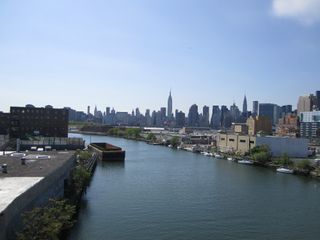
Dirty Water: Can US Clean Up Its Act?

Trip Van Noppen is president of Earthjustice, a nonprofit, public-interest law organization dedicated to environmental protection. Van Noppen contributed this article to LiveScience's Expert Voices: Op-Ed & Insights.
More than half of our nation's waterways are in "poor condition."
So said the "National Rivers and Streams Assessment", a recent report from the Environmental Protection Agency (EPA).
As the weather warms and minds turn to spring and summer recreation, waterways in poor condition affect you directly. If you are planning to swim, fish, or boat in a local body of water, that statistic affects you. If your expectation is only to drink clean, safe water, that statistic affects you.
The extent of pollution and degradation in our waterways is alarming. Two decades ago, the EPA found that 36 percent of the waterways they monitored were in poor condition. Because the EPA only assessed a small number of waterways at that time, the actual percentage of pollution-impaired waters may have been greater.
In the time since, monitoring has expanded and we now know that a startling 55 percent of monitored waterways in the United States are impaired by pollution — meaning they are not clean enough for healthy recreation, public drinking water and subsistence fishing.
This problem penetrates nearly every city and rural community in every region of the country, making the majority of our streams and rivers a health risk for swimmers, rendering our fish inedible, threatening our drinking water supplies, ruining aquatic wildlife habitat and contaminating our beaches, lakes and cherished recreation spots. [Water Pollution Caused by Birth Control Poses Dilemma]
Sign up for the Live Science daily newsletter now
Get the world’s most fascinating discoveries delivered straight to your inbox.
A problem on this scale requires serious, broad-based policy solutions at a federal level. One of those solutions is sitting unfinished in a White House office, where it's been idle for more than a year, waiting for final approval from the president and his inner circle of advisers.
That solution, proposed by the Obama administration two years ago, is to restore clean water protections to 59 percent of the nation's streams and millions of acres of wetlands. Through two polluter-favorable policies enacted into the Clean Water Act during the Bush Administration, those protections were lost.
More than 40 years ago, Congress enacted the Clean Water Act with the "national goal that the discharge of pollutants into navigable waters be eliminated by 1985" (my emphasis). Yet the promise of the Clean Water Act has plainly been compromised.
Pollution controls directed by the act have brought about remarkable, but still incomplete, progress in cutting industrial pollution. But lax enforcement, ineffective voluntary programs and a host of exemptions for the nation's biggest polluters — especially factory farms and industrial agriculture — have prevented us from realizing the goals of the act.
Restoring those Clean Water Act protections and safeguarding our streams and wetlands is a critical step in stemming the tide of dirty water in our country and starting to clean up our rivers, streams, lakes and beaches.
As the recent EPA assessment revealed, the stakes are too high to wait any longer for those clean water safeguards. Forty percent of our streams and rivers have excessive levels of phosphorous pollution, while more than a quarter have excessive levels of nitrogen, both of which come from farm waste and fertilizer runoff and lead to toxic algae outbreaks.
That green slime epidemic is spreading across our Great Lakes, covering many of Florida's prized waters and threatening tourism, suffocating the great Chesapeake Bay, polluting parts of Puget Sound and endangering waters across the nation.
The numbers do not stop there. According to the EPA's assessment, 24 percent of our rivers and streams suffer from destruction of the vital habitat around them as a result of development and aggressive agricultural or forestry practices, and more than 13,000 miles of our rivers and streams contain fish with unsafe levels of mercury or other toxins.
To be certain, in order to make our waterways safe and clean, the administration will need to address the very serious problem of agricultural pollution and the loopholes that allow that problem to go unaddressed, as well as mining and drilling pollution and urban stormwater. Given that, restoring basic Clean Water Act protections to all waters of the United States should be a no-brainer starting point for the president and his administration.
The views expressed are those of the author and do not necessarily reflect the views of the publisher.
